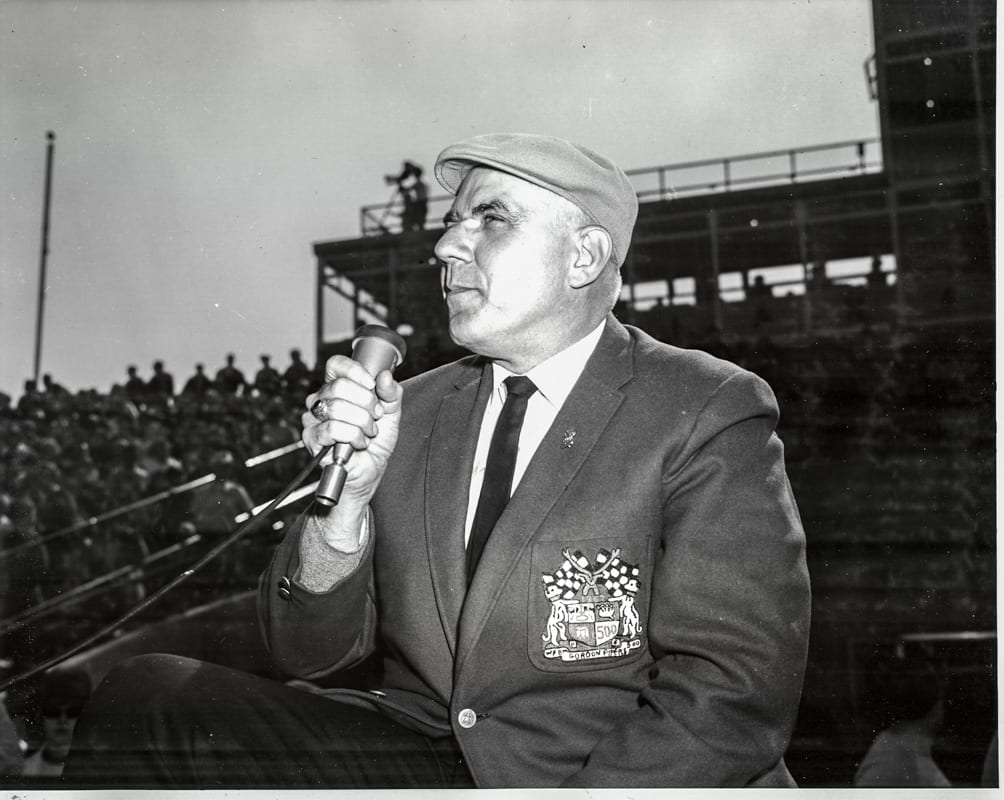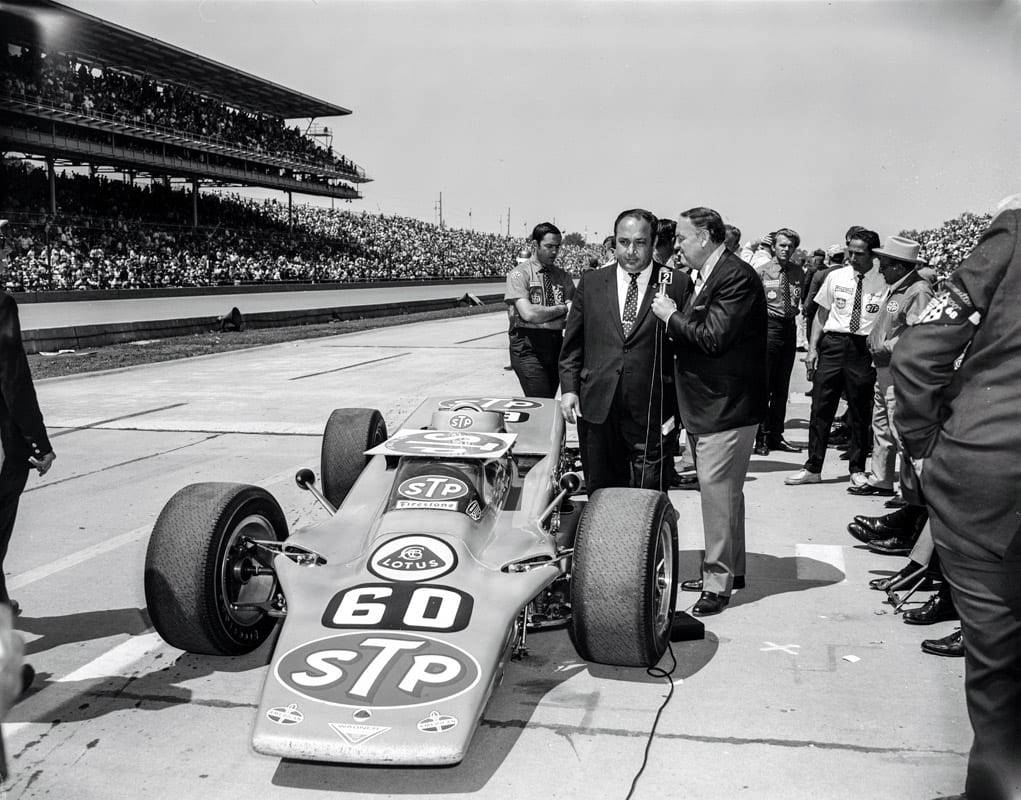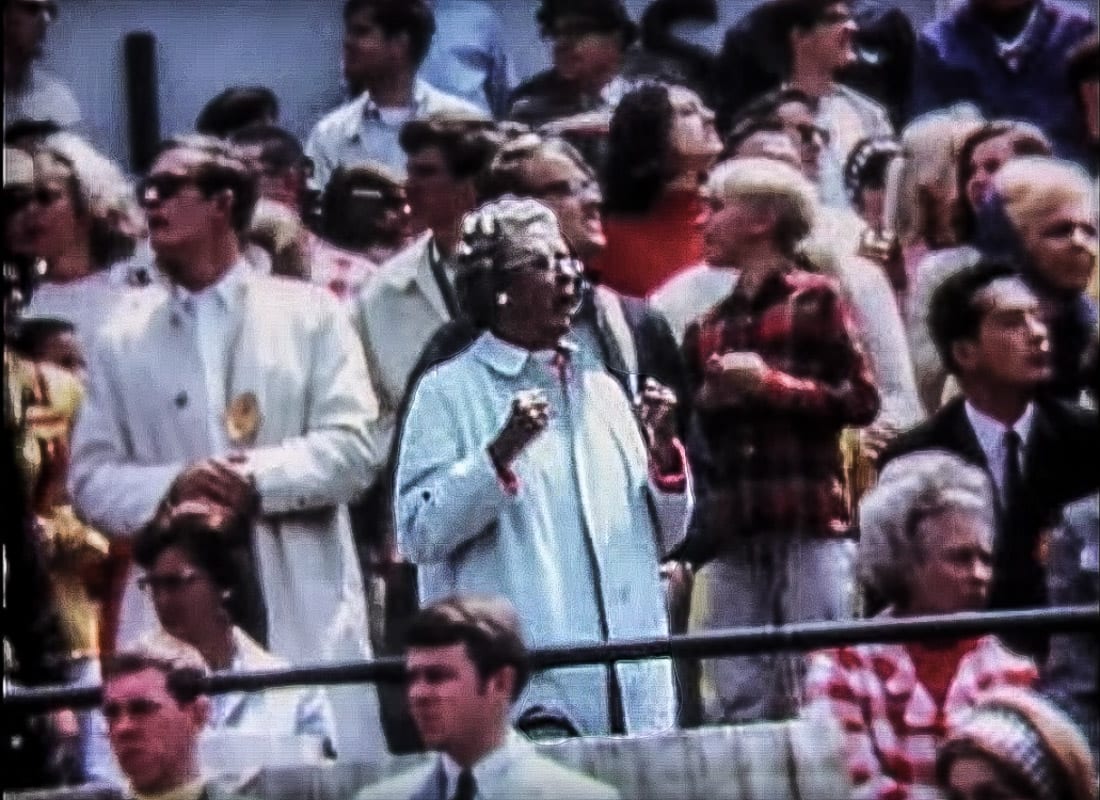Time Capsule: 1968 Indy 500
The 1968 Indy 500. Fifty years ago. The End of Two Eras, the Beginning of two more and a grueling month-long battle of wills contested not only at the infamous 2.5-mile oval Brickyard but also at a proverbial crossroads.
Rhythm and blues cotton pickers may tell of a “Crossroads” in the Mississippi Delta where the Devil strikes a deal, but the race fans hear their siren’s song at a crossroads in Speedway, Indiana where fuel-driven fates collide with history and legend.

For over half a century front-engine roadsters had dominated at the “International 500 Mile Sweepstakes.” By 1965, Scotsman Jim Clark neutered that superiority. By 1968 the roadster was all but obsolete. One ornery cuss who was oblivious to the obsolescence was tough-guy motorman Jim Hurtubise, who campaigned his front-engined Pepsi Frito-Lay Special in defiance.

Ah yes, clean-cut, stocky but stubborn Jim Hurtubise, known as “Herk.” A fiery crash at Milwaukee in 1964 left him with the option of fusing his gnarled mangled hands into a shape that a) would allow him to finish his morning constitutional in hygienic fashion or b) grip a steering wheel. Herk told Old Sawbones: “Get to work, Doc, I’ve got races to run — just make ‘em so I can hold a steering wheel.”
But with his old-school roadster, Herk wasn’t the only race-car wrangler bound and determined to obviate the dictates of fate.
Equally stubborn, but on an opposite end of how to approach entering if not winning the Indy 500, was the legendary jelly-bellied Chi-town showman and self-proclaimed “Mister 500,” Andy Granatelli, who had been racing at Indy since 1946. And to understand Andy Granatelli in 1968, you have to understand Andy Granatelli in 1967.

In 1967 Granatelli (pictured above in suit) and his engineer, Ken Wallis had procured a Pratt & Whitney gas-turbine helicopter engine and formed a race-car chassis around it, shoehorning 1963 Indy 500 winner Parnelli Jones in the seat. Every other car entered in the 1967 Indy 500 had the engine in the back. Wallis’s design was like a two-seater with the engine where you might expect the driver and the driver where you might expect the passenger. The racing press derisively dubbed it “Silent Sam.”
Parnelli’s quiet, warped quasi-sidecar nearly lapped the entire field in 1967 — but failed to win due to a $6 gearbox-bearing failing three laps from the finish.

This four-wheel-drive, turbine-powered silent-but-menacing “Whooshmobile” terrorized not only its competition but also the status quo. Perhaps realizing that nobody but Simon & Garfunkel wanted to listen to the sound of silence, the United States Auto Club (Indy’s sanctioning body) began imposing draconian restrictions on turbine engines, cutting the air inlet by 1/3rd and dropping the horsepower commensurately.
To fight back at USAC’s High Sheriffs and to make up for the horsepower disparity, Granatelli assembled a dream team of drivers, engineers, and administrators for his 1968 effort. On board was Colin Chapman, the founder of Lotus sports cars, and the man who put Jim Clark in Victory Lane in 1965 — the first rear-engined racer to take Indy. The list of the Lotus’s accomplishments in Formula Car competition is as tall as the Brickyard’s leaderboard, and this latest entry was arguably most impressive. Chapman’s new Lotus 56 was Indy’s first wedge-shaped design and a stark deviation from the year’s marsupial-shaped roadsters and cigar-tubed rear-engine cars.

Granatelli and Chapman. What could wrong? As impressive as the hardware was the meat in the seat. The latter included arguably the greatest race-car driver of all time Jim Clark, who tested at Indy that February in the new 4-wheel-drive, fat-tired turbine Lotus. Flanking Clark was Parnelli Jones, relegated to last year’s model, Wallis’ sidecar-style sled.
Also in rotation was British hot-shoe Mike Spence, American journeyman Art Pollard, the mother-trucker of all motorcycle madmen, “Pelican” Joe Leonard, and 1966’s winner, dashing Graham Hill.

Unfortunately, even before qualifying commenced, the wheels began to fall off — and in the case of Mike Spence, literally. As he shook out the #30 Lotus during practice, some say Spence misjudged the line hurtling into Indy’s dreaded sharp-left Turn 1 and crashed. Later forensics determined that the suspension might have been suspect, therefore negating the driver error pronouncement. Regardless, upon impact, the suspension was mangled and the right front tire folded back into the cockpit whacking Spence in the noggin. He died a few hours later.
But Spence’s tragic passing was a sick, macabre and unnecessary addendum to the fate of Jim Clark. Clark was killed in a Formula 2 race in Germany a fortnight before Indy’s Month of May time trials started.
Chapman, meanwhile, returned to Old Blighty before the race began, grieving for his best friend, Clark, and now further devastated by the death of Spence, the man Chapman had hired with a one-week contract to replace Clark and prove his mettle.
Another hit to “Mister 500’s” team effort was the sudden retirement of Parnelli.
“The reason that I didn’t drive the car in 1968 was that Andy wanted me to drive the old car when Chapman had built the new wedge-shaped cars,” Jones said. “I didn’t think the old car was safe so I didn’t drive it. I was proven right when Joe Leonard destroyed the car by spinning it and putting it into the wall.”
And with that practice crash, “Silent Sam” was now muted forever.
Beyond Parnelli, many others left quietly in 1968. Sixty-one drivers entered the Speedway that year, attempting to qualify among the fastest 33. Many failed, withdrew, or were told to go home and practice some more.

But when time trials wrapped, the front row of qualifiers encapsulated the story of the 1968 500. Joe Leonard claimed the pole at 171 mph. His teammate, Graham Hill, who broke the Speedway’s 170-mph barrier in qualifying, was 2nd. Outside of the pair of turbines, Bobby Unser qualified 3rd in a turbocharged 4-cylinder Offenhauser-powered Dan “Eagle” built by Dan Gurney (pictured below).

On race day, Thursday, May 30th (yes the race was held on a Thursday), 1962 winner Rodger Ward predicted a 1-2-3 sweep for the trio of Lotuses — apropos, as these motors sounded like vacuum cleaners on anabolic steroids.
However, neither Leonard, Hill or Art Pollard dominated the way that Parnelli Jones had the year before. Their cornering speeds were swift and smooth due to the 4-wheel drive, but their straightaway speeds suffered due to the restricted airflow and reduced horsepower. Still, they were in the mix, and Joe Leonard often lead.

Nine laps in, Herk burned a piston and parked his front-engine Mallard in the pits. And with that parts failure, the Fat Lady sang for the traditionalists — never again would a front-engine car compete in the 500-mile race. Meanwhile, Mario Andretti burned two pistons in two different cars and was done. 100 laps in and AJ Foyt lunched his rear end gears. Ten laps later, Graham Hill lost a wheel in Turn 2, caromed off the concrete wall and was the first of Granatelli’s turbines to retire.
On the subsequent restart, Bobby Unser blasted past Leonard and 275,000 trackside Hoosiers hooted and hollered in appreciation of a piston-driven engine sticking it to the newfangled machinery.
Unser (pictured above) later refueled but was stuck in high gear. He fought to keep his Eagle running while exiting his stall and also struggled not to burn up the clutch. But his pit exit was excruciatingly s-l-o-w. Leonard rockets by Unser and reclaimed the lead.
With twenty laps left, this was Leonard’s race. A crash and a fire on the backstretch brought out the yellow caution lights.
Ten laps later, with nine laps remaining, USAC threw the green flag. Both Pollard and Leonard stood on it. And in an absurdist choreography, the fuel pumps on both turbine-powered machines seized, nearly simultaneously.
Andy Granatelli was apoplectic. “Whoever runs the show upstairs doesn’t want me to win,” he told pit reporter Chris Economaki.
The lucky recipient of Mister 500’s wicked turn of fate was Unser, who had no further impediment to Victory Lane.
“I can’t believe something nice would ever happen to me, but it has,” Bobby Unser said.
And so it went. Bobby’s win was the first Indy 500 for the Unsers. “Uncle” Bobby, Al Sr. and Al Jr, would ultimately claim eight more. After the race, USAC further punished the turbines, making the air inlet smaller again.

That last act killed them — the turbines went silently into the night. The roadsters were also kaput. Hurtubise’s Mallard would be the last front-engine roadster raced at the Speedway. Never again would a roadster qualify there. But that did not prevent Herk from perpetuating his charade at other USAC sanctioned events. Finally, in 1972, Herk showed up on Bump Day and put ‘er in the qualifying line, yet never attempted to get into the show.
When the six o’clock gun sounded and the field was set, Hurtubise opened the engine compartment, revealing no motor, but a makeshift ice chest and five cases of beer for the thirsty comrades in competition. The Era of the front-engine Roadster ended, not with a bang but a tippler.
1968 Indy 500 Photo Extra!

Action sequences for the Paul Newman movie “Winning” were shot at Indy in ‘68.

Too much nitro? During the race, and after subbing for Larry Dickson, Mario Andretti burned pistons in two different entries.

Bruce McLaren also tried the turbine approach, but couldn’t crack the Fast 33

1967 Winner AJ Foyt had more fun tooling around in the Pace Car than in actual competition, finishing 20th with a broken rear-end.

Bobby Unser’s Mom lost her son Jerry at Indy in 1959, but cheers her son Bobby to victory in 1968




